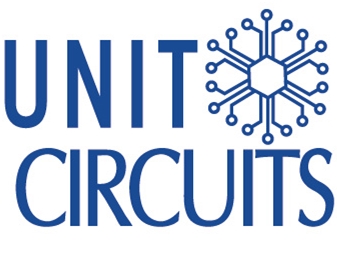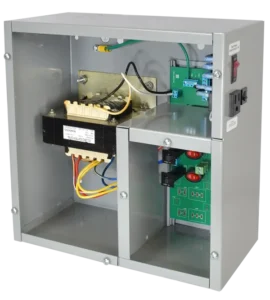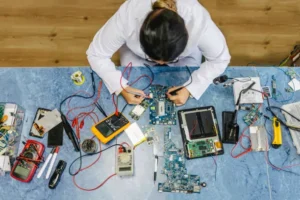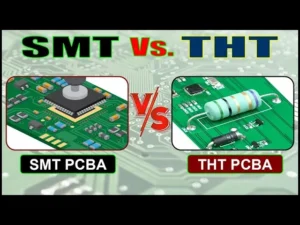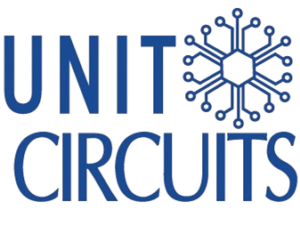Quick Leads
10 Commonly Used Circuit Board Components and Their Functions: Essential PCB Parts Explained
The 10 most commonly used circuit board components are resistors, capacitors, diodes, transistors, inductors, transformers, ICs, relays, connectors, and sensors. Each of these plays a vital role in controlling current, storing energy, or enabling switching operations in electronic devices.
1. Resistors: Function and Common Uses in PCBs
- Function:Resistors limit the flow of electrical current in a circuit. They’re one of the simplest yet most important components on any PCB.
- Common Uses:
- Used in LED circuits to prevent the diode from burning out by regulating current.
- Common in signal conditioning and voltage dividing circuits.
- Common Types:
- Fixed resistors.
- Variable resistors (Potentiometers).
- Thermistors (temperature-dependent resistors).

2. Capacitors: Voltage Stabilizers and Energy Storage Devices
- Function: Capacitors store and release electrical energy. They stabilize voltage levels by charging and discharging when the power supply fluctuates.
- Common Uses:
- Power supply circuits for voltage smoothing.
- Audio circuits to reduce noise.
- Common Types:
- Electrolytic capacitors: Great for high-capacitance applications.
- Ceramic capacitors: Known for stability in high-frequency circuits.
- Tantalum capacitors: Used in compact, high-reliability applications.
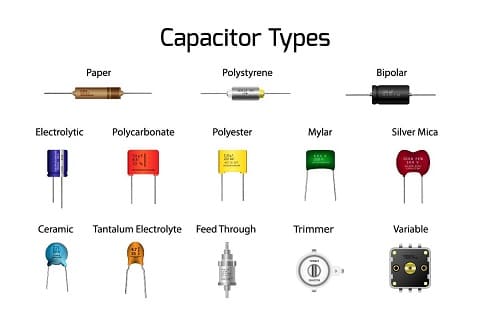
3. Diodes: One-Way Current Flow
- Function: Diodes let current flow in only one direction, protecting components from reverse currents.
- Common Uses:
- Rectifier circuits to convert AC to DC.
- Voltage protection in power supplies.
- Common Types:
- Standard diodes.
- Zener diodes for voltage regulation.
- Light-emitting diodes (LEDs) for indicator lights.
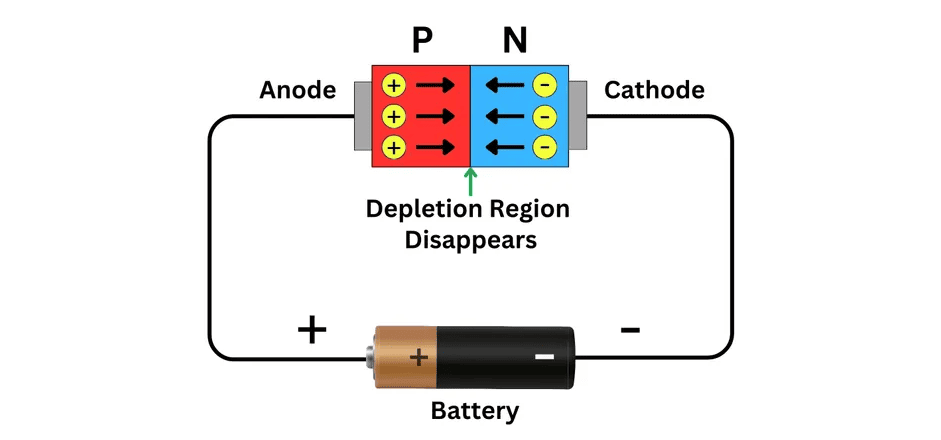
4. Transistors: Amplifiers and Switches in Electronic Circuits
- Function:Transistors control large amounts of current or voltage with a small input signal. They act as amplifiers or switches.
- Common Uses:
- Used in microprocessors for logic and switching.
- Signal amplification in audio equipment.
- Common Types:
- Bipolar Junction Transistors (BJT).
- Field-Effect Transistors (FET).
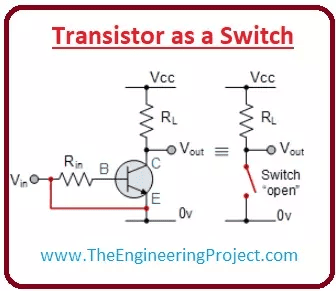
5. Inductors: Stabilizing Voltage and Filtering Signals
-
Function: Inductors store energy in a magnetic field when current flows through them. They resist sudden changes in current.
-
Common Uses:
-
Power supplies for energy storage and voltage smoothing.
-
RF circuits for signal filtering.
-
-
Common Types:
-
Air-core inductors.
-
Iron-core inductors.
-
6. Transformers: Voltage Conversion Devices
-
Function: Transformers transfer electrical energy between circuits using electromagnetic induction. They usually step voltage up or down.
-
Common Uses:
-
Power supplies for voltage regulation.
-
Audio systems for impedance matching.
-
-
Common Types:
-
Step-up transformers.
-
Step-down transformers.
-
Isolation transformers.
-
7. Integrated Circuits (ICs): Miniaturized Circuits for Complex Functions
-
Function: ICs are miniaturized circuits that have lots of electronic components on a chip. They do lots of complex things.
-
Common Uses:
-
Microcontrollers in embedded systems.
-
Logic gates in digital circuits.
-
-
Common Types:
-
Analog ICs.
-
Digital ICs.
-
Mixed-signal ICs.
-
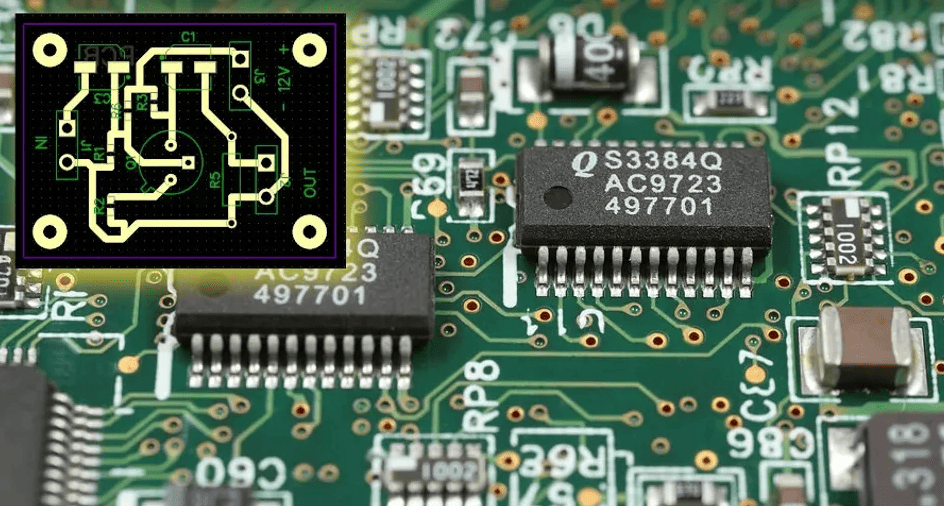
8. Relays: Electromechanical Switches for High-Power Control
-
Function: Relays use a small electrical signal to control larger currents. They provide isolation between control and power circuits.
-
Common Uses:
-
Automotive systems for controlling motors.
-
Industrial systems for controlling machinery.
-
-
Common Types:
-
Electromechanical relays.
-
Solid-state relays.
-
9. Connectors: Bridging External Devices and PCB Components
-
Function: Connectors provide electrical connections between different parts of a circuit or external devices. They make sure signals and power get where they need to go.
-
Common Uses:
-
USB ports for connecting external devices.
-
Pin headers for interfacing with sensors.
-
-
Common Types:
-
Pin headers.
-
USB connectors.
-
Ribbon cable connectors.
-
10. Sensors: Devices for Detecting Environmental Changes
-
Function: Sensors detect physical changes, like temperature or light, and turn them into electrical signals that other components can work with.
-
Common Uses:
-
Temperature sensors in HVAC systems.
-
Proximity sensors in industrial automation.
-
-
Common Types:
-
Temperature sensors.
-
Proximity sensors.
-
Light sensors.
-


For more information, visit below:
Frequently Asked Questions (FAQ)
Circuit boards have important stuff like resistors, capacitors, inductors, transistors, diodes, relays, sensors, and integrated circuits. They’re the basic building blocks for controlling current, storing energy, and managing signals in a circuit.
The most common circuit components are resistors, capacitors, inductors, diodes, transistors, ICs, and connectors. You’ll find these components in almost all types of PCBs, from simple consumer electronics to advanced industrial applications.
A “common” on a circuit board usually means a ground connection or a common voltage point that different components share. This connection helps keep voltage and current stable.
The most common circuit board is a single-sided PCB. Components are mounted on one side of the board, and the wiring is on the other side. You’ll find these in simple electronics like calculators and remote controls.
Limited Time Offer:
Get $100 off your order TODAY!
 Trusted by 100+ businesses worldwide
Trusted by 100+ businesses worldwide No hidden fees – transparent pricing
No hidden fees – transparent pricing Guaranteed quality with on-time deliver
Guaranteed quality with on-time deliverRequest for Quote
RECENT POSTS
Understanding Ball Grid Array (BGA) Technology
Top 10 PCB Assembly Manufacturers in Europe
What Are PCB Conformal Coatings?
How to Repair Circuit Boards
RELATED POSTS
Leading PCBA Manufacturer
✅ Assemble 20 PCBAS for $0 ✅ Get $100 OFF – Risk-Free Trial!
✅ 100+ Satisfied Customers
✅ Ensured Quality & On-Time Delivery
✅ Free Trial, No Commitments!
